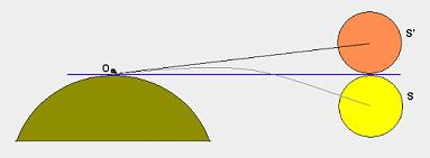The Spring Equinox ushers in the new, and very welcome, spring season. But like so much in life, everything is not as it appears.
Equinox means equal, so on that day we should have equal amounts of day and night, right? Yet that’s not actually true, for two reasons.
First, the sun is a pretty big disk, not a point. It takes time to fully set, which means an extra two-and-a-half to three minutes of daytime in the mid-temperature latitudes.
Second, the atmosphere is like a lens or prism in that it lifts the sun up about half a degree from its true position near the horizon. So when you see the sun on the horizon, its actually just below the horizon. This is called atmospheric refraction.

What all this means is there is actually more day than night on an equinox. By the way, this is why almanacs don’t give sunrise and sunset to the second, because not only is there atmospheric refraction, but it varies a bit with temperature, humidity and air pressure. (https://earthsky.org/astronomy-essentials/are-day-and-night-equal-at-the-march-equinox?)
In addition, the sun actually rises and sets faster around the time of an equinox. The duration of a sunset varies by latitude — faster near Earth’s equator and more slowly at higher latitudes. At every equinox, the sun rises due east and sets due west, which means the setting sun hits the horizon at its steepest possible angle. It’s that steep angle that makes the sunrise or sunset faster. (https://earthsky.org/astronomy-essentials/when-are-the-fastest-sunsets)
But if all of this is too much information, enjoy spring!
